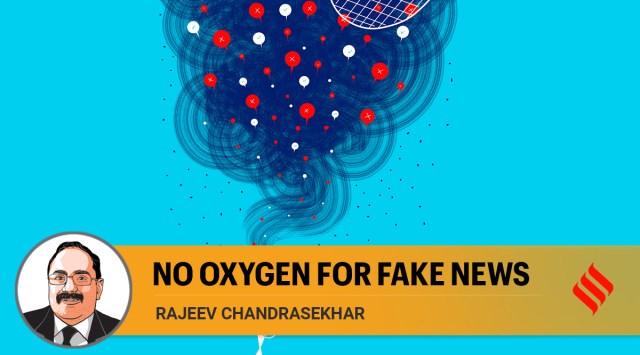
The prime minister launched Digital India in 2015 to use the internet to bridge the distance between citizens and government and deliver responsive governance, a deep transformation from the corrupt and leaky governance that India faced for decades.
Over the last nine years, the internet in India has expanded significantly, making us the world’s largest connected democracy with over 83 crore people online. Every Indian will be on the internet by 2025. Universal access is no small feat – but by combining that with the digitalisation of governance and digital public infrastructure, the transformation of Indian democracy and governance has become a beacon for the world. This has been acknowledged by the IMF and other multilateral institutions.
The internet has changed over the past decade and this change is defined by two trends. One, the presence of large platforms that have power over how users experience the web. Two, the internet is also now a space for user harm, misinformation and toxicity that has outpaced good innovation. Misinformation operations for cyberwarfare by state and non-state actors have utilised social media platforms to create civic unrest and for radicalisation and terror recruitment. This poses internal security and national security risks and can cause serious real-world harm. In 2019, a network of accounts and pages managed by Pakistan’s ISPR were detected engaging in malicious, coordinated activity against India on social media platforms. These types of attacks have become more sophisticated. In recent times, Covid misinformation, fake cures, financial market misinformation and AI deep fakes have caused and will cause tremendous social and economic harm. More recently, The Washington Post exposed Khalistani elements using bots to conduct misinformation operations against the Indian government, including giving calls to violence. Misinformation is not an outlier on the internet – rather, it’s being weaponised repeatedly against open democracies like India to create chaos by organised vested interests.
Misinformation cannot be left unchecked, especially in India, because of the scale and diversity of its users — ranging from children to the elderly. Misinformation is being increasingly recognised by democracies as a challenge and all are struggling to create a framework to deal with it. The G20 Leaders Bali Declaration of 2022 highlighted the need to counter disinformation campaigns as an essential requirement to prevent online threats and promote cyber security.
Social media intermediaries enjoy immunity and safe harbour thanks to Section 79 of the IT Act, after the UPA government amended the law in 2008. This has been used to escape accountability or legal ramifications for content on these platforms. It can be argued that this free pass has, over the years, resulted in skyrocketing misinformation, user harm, toxicity, etc. Recent studies also show that the velocity and reach of misinformation are often exponentially greater than truthful content — some studies say almost by 20x.
The IT Rules were first overhauled in May 2021 and in October 2022. Under Rule (3), there were nine no-go areas for content on social media, if the platforms were to continue to operate with legal immunity under Section 79. These included child sexual abuse material, religious incitement and misinformation. Due to lax enforcement by social media platforms in the face of new challenges like AI/deep fakes and the proliferation of anonymous users, bots and fake accounts, the immunity was creating a situation where no one could be held accountable for content that was false or illegal. Social media platforms had become a place where victims had no recourse to remedy.
IT rules are a step in denying misinformation space on the internet. Social media platforms are becoming more accountable for the content they host. It was felt by many platforms that since the government was a target of most misinformation operations, a fact-checking unit was needed to flag misinformation. Why is this fact-checking unit a government body? Only the government has access to government data and so, it is almost impossible for any non-governmental entity to effectively fact check content about the government.
What would be the consequence of content being labelled false or misinformation? They are simple – SM platforms can remove the labelled content or exercise the option to continue to host the disputed content. If they chose the latter, the aggrieved department can dispute it legally in the courts as any principle of natural justice would and should permit. There is already a grievance office and GAC appellate framework available to content posters to deal with their grievances.
So why are some seeing problems with this evolving and clear effort to deal with misinformation?
There is a deliberate attempt to create confusion by vested interests on the scope and applicability of these rules. In actual fact, Rule 3(1)(n) explicitly provides that the fundamental rights of Indian citizens cannot be violated by any platform.
Misinformation operations are clear and present dangers to our democracy, the goal of a safe, trusted internet and to our ambitions of becoming a digital economic power. Our determined efforts to deny misinformation continue without ever diminishing our constitutional values and fundamental rights to ensure the internet never becomes a safe haven for those who seek to misuse it. These rules represent a partnership between the government and SM platforms in keeping our internet safe for all Indians.
The writer is Union Minister of State Electronics & IT and Skill Development and Entrepreneurship